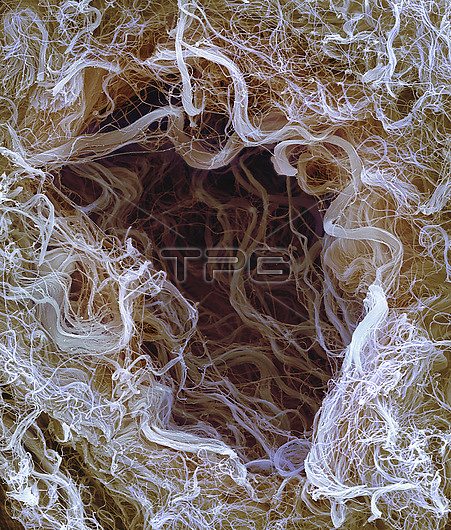
Coloured scanning electron micrograph (SEM) of collagen bundles in the Wharton's jelly of a human umbilical cord. The umbilical cord from placental mammals is also called the navel string, birth cord or funiculus umbilicalis. It is a conduit between the developing embryo or fetus and the placenta. During prenatal development, the umbilical cord is physiologically and genetically part of the fetus. It normally contains two arteries (the umbilical arteries) and one vein (the umbilical vein), buried within Wharton's jelly (a gelatinous substance made largely from mucopolysaccharides that protects the blood vessels inside). The umbilical cord also contains undifferentiated connective tissue (mucous connective tissue) called collagen and mesenchyme. Collagen is a type of structural protein that is part of the extracellular matrix (ECM). It is the most abundant protein in mammals. The extracellular matrix is a complex structural tissue component surrounding and supporting cells in mammalian tissues. Collagen forms elongated fibrils and is primarily found in fibrous tissues such as tendons, ligaments and skin. Magnification: x400 when shortest axis printed at 25 millimetres.
| px | px | dpi | = | cm | x | cm | = | MB |
Details
Creative#:
TOP25525824
Source:
達志影像
Authorization Type:
RM
Release Information:
須由TPG 完整授權
Model Release:
N/A
Property Release:
N/A
Right to Privacy:
No
Same folder images:

 Loading
Loading